Interview with Monica Saigal
Jordan Wright
February 24, 2024
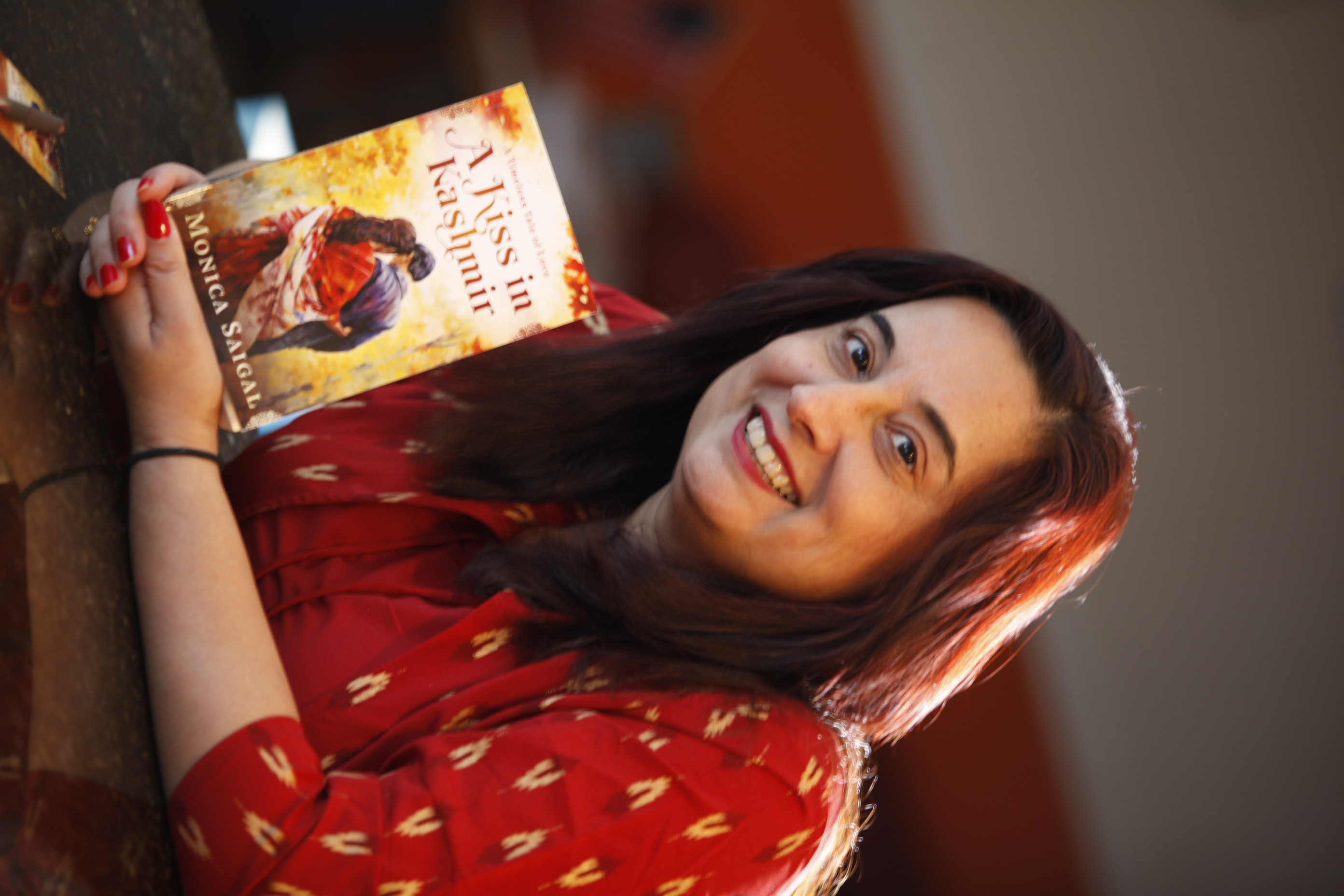 Author Monica Saigal As two Northern Virginia residents with careers in food writing, Monica Saigal and I met through the local food world over a decade ago. Over those many years, I have enjoyed witnessing her transition, or should I say blossoming, from successful cookbook author into novelist of international renown. Saigal’s books garner not only extensive, top-tier media coverage but also excellent reviews. As an award-winning writer, accomplished literary coach, gifted poet, storyteller, keynote speaker and educator, her cookbooks and novels have enjoyed universal appeal.
Last month Saigal, whose full-time gig is Social Media Strategist for a tech company, launched her latest love story/mystery “A Kiss in Kashmir” at the Hilton Alexandria Mark Center Hotel. Over a hundred fans including media were treated to a sumptuous assortment of Indian-centric hors d’oeuvres and desserts designed by the hotel’s Executive Chef Rajeev Sethi. Kashmiri ingredients including cardamom, almonds, saffron and cinnamon were incorporated into these delicacies and a Kashmiri Kahwa tea service was offered as well. The ever-popular local radio celebrity, Kojo Nnamdi, conducted the interview with the two dear friends seated on a lavishly decorated stage befitting an Indian wedding scene.
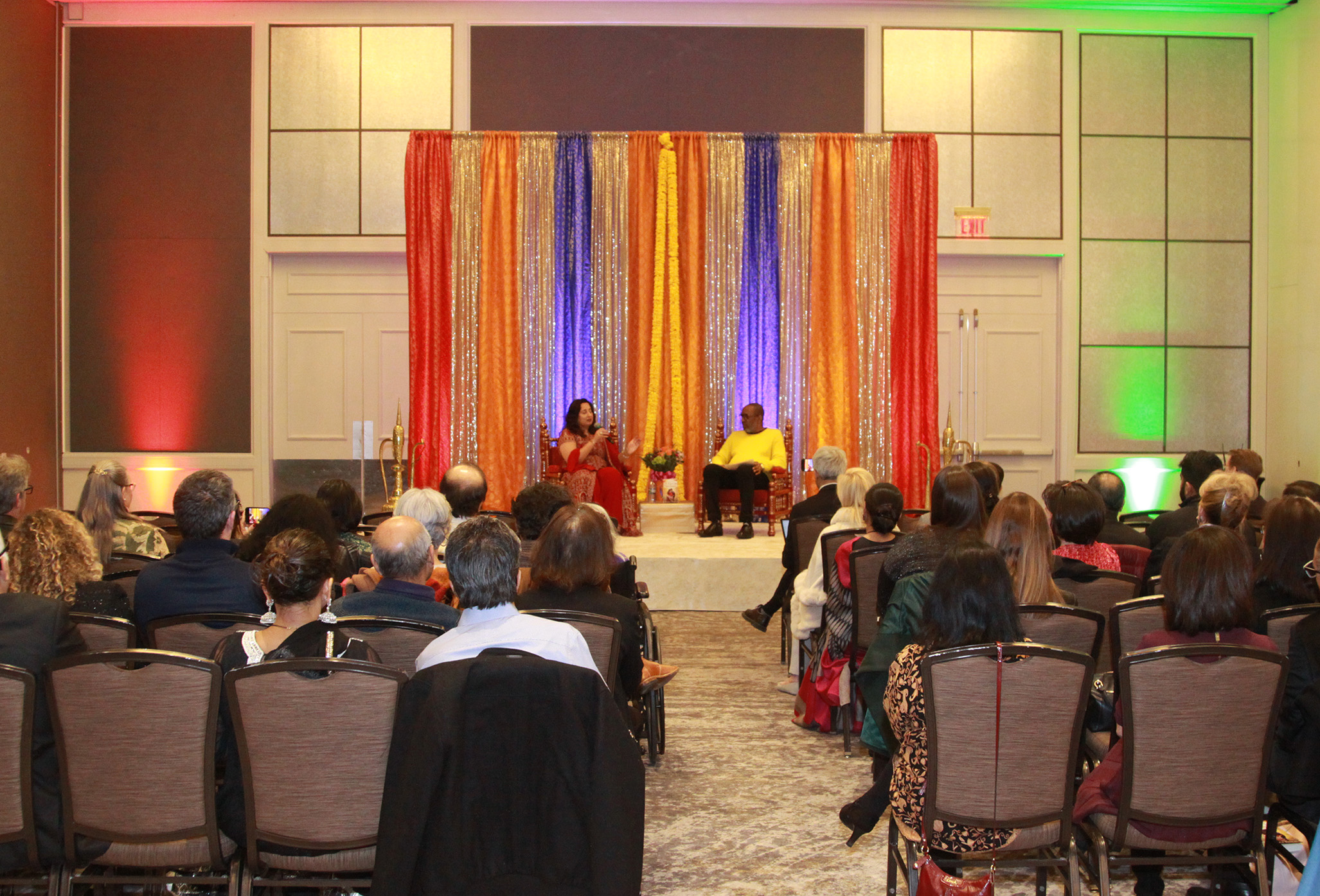 Book launch event at the Hilton
 Desserts served at the book launch I spoke with Saigal after the event.
Jordan Wright – Are all your novels set in India?
Monica Saigal – “The Devil in Us” was set in the U.S, “The Soul Catcher” is magical realism, and “Karma and the Art of Butter Chicken” was set in Delhi.
JW – Your latest novel “A Kiss in Kashmir” tells a beautiful story of an older couple finding love against all odds. It is a deeply human story filled with romantic emotion. What was your inspiration?
MS – It was very selfish. I wrote the book I wanted to read. I found that most of the books I read weren’t for older people. I wanted to write a story for an older demographic that was realistic and very forward thinking. We sometimes tend to bypass the older generations in our narratives and I think that needs to change. I think people are looking for these stories.
JW – Your novels provide close-ups into the lives, environments, and emotions of many diverse Indian castes as well as those from other cultures. You gift them with intimate emotions and romantic interactions. How do you source these descriptions? Do they come from outside your circle of friends? Are they fantasies or do you draw from stories friends tell you?
MS – When I create a character, I sketch out the psychological profile of the character. Then I ask around to friends to find someone who fits the description and is willing to talk to me. Then I can fill out my profile because I don’t think I can claim to know each individual characters’ personalities. When Kojo read the book, he called me right away because, as an older widower, he identified with that profile. “I would have reacted the same way George [the hero in “A Kiss in Kashmir”] reacted,” he told me.
JW – I know you conduct writing classes for budding authors. How can locals find your schedule?
MS – On weekends I’ll be conducting classes on Healing Modalities. I have a series coming up soon. The classes will be followed by making jewelry, yoga, painting and sound healing. The schedules are posted on my website www.MonicaSaigal.com
JW – Your dialogue shows a vibrancy which contributes to the authenticity of conversations between characters. Do you record conversations while you are out and about? Or do you carry a notebook to jot down quips and quotes?
MS – I learned from many of my novelist friends how to listen and how people speak. It’s active listening. I feel people are looking for insight where there is dialogue. I used to write as if it were theoretical. Now I listen when I go to restaurants. I don’t spy on people! I want to hear how they start a sentence and how they stop a sentence.
JW – Does living in Northern Virginia influence your writing?
MS – I find a lot of serenity where I live. It is beautiful here in Virginia. I’ve lived here for over 20 years and love walking around Meadow Lark Gardens and other local parks. The Japanese have a saying, “Go and bathe in the forest.” That is what Virginia affords me.
JW – In your early writing it was your cookbooks that established your writing career with your reputation for approachable Indian cooking. Can you find all the ingredients you need to prepare your dishes?
MS – Very easily. We used to get ingredients sent from India. Nowadays I can go to the Ashburn area where Patel Brothers has everything including freshly made rotis and pickles.
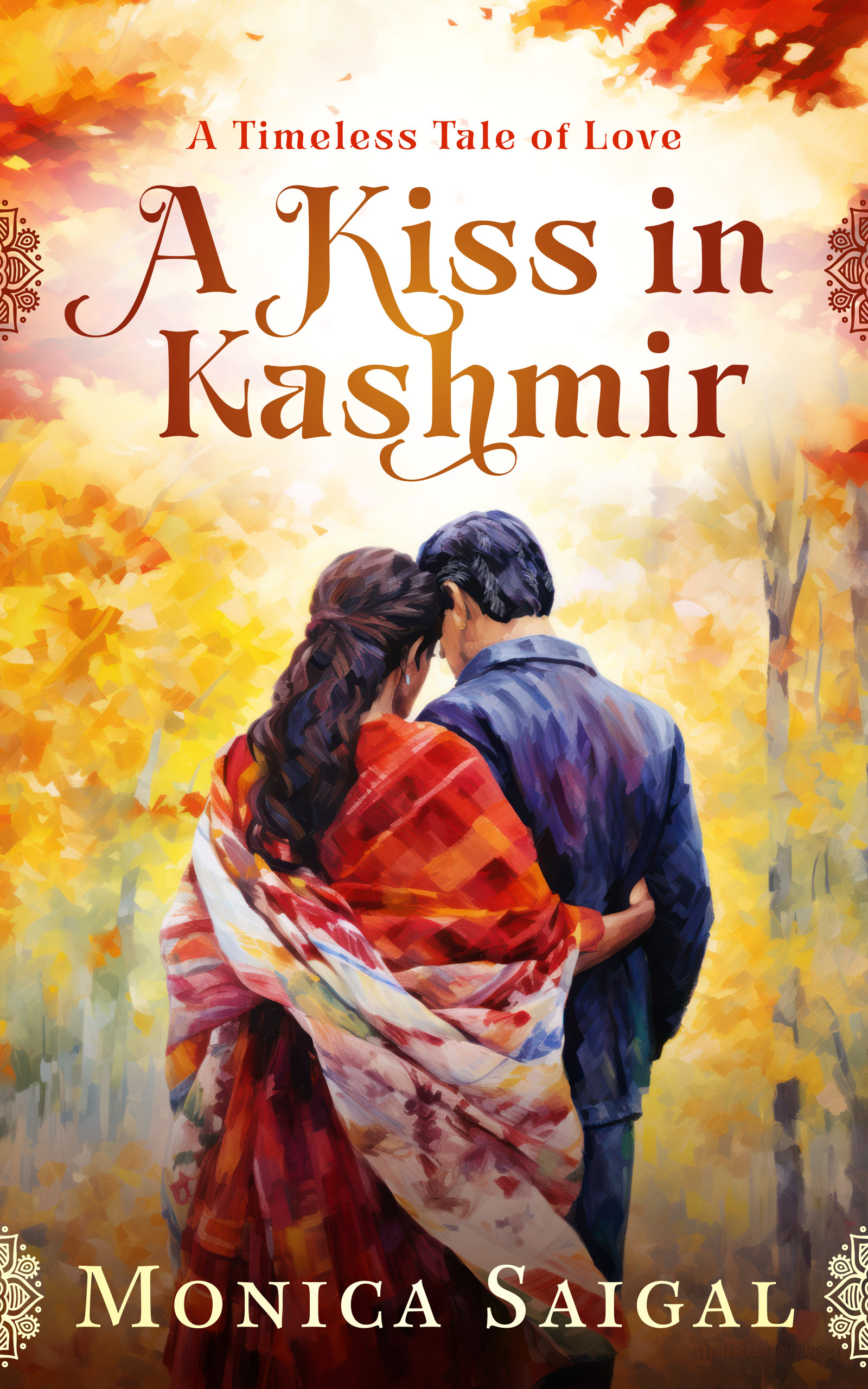
Jordan Wright
March 6, 2019
Photo credit – Jordan Wright
Last October Jonathan Till arrived at Del Ray’s Evening Star to take over as Executive Chef in a restaurant that has been successful serving a mostly local clientele for over two decades and seen its share of chefs. It’s also seen its ups and downs.
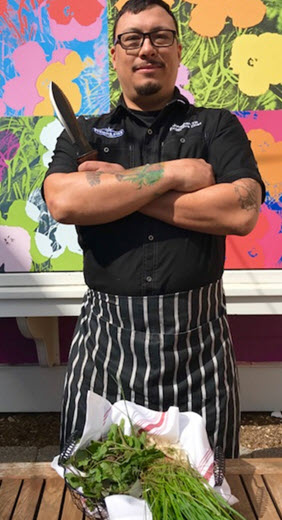 Evening Star Executive Chef Jonathan Till Till brought with him a wealth of experience from his education at the New England Culinary Institute and an internship at L’Espalier in Boston, where he trained under James Beard Award winning chef, Frank McClelland. From there he received an Associates’ Degree in Culinary Arts in 2008 and learned pastry under Certified Master Pastry Chef, Frank Vollkommer, at the Saratoga National Golf Course.
Locally, Till spent two years at William Jeffery’s Tavern, a neighborhood joint featuring pub food, followed by two years as a corporate chef for the Barteca Restaurant Group before they were bought out by Del Frisco’s for a cool $325M.
Before all that, he’d taken a turn or two in fine dining (two months spent picking shells out of crabmeat in a dark room at The Dabney was not to his liking) and farm-to-table. As it turns out, connecting with farmers and growers seemed to suit him far better. At the casual Beekman Street Bistro in Saratoga Springs, New York’s tony arts district he’d enjoyed relationships with local Mennonite farmers, and at the five-star Hermitage Hotel in Nashville he was able to source many of his ingredients from their historic vegetable gardens and private cattle farm.
Till’s curiosity peaked when right out of culinary school he met an old trapper and farmer who taught him how to forage in the wild. He’d come from generations of home canners and wanted to preserve the bounty he culled from the fields and forests. After that auspicious meeting, he began making his own charcuterie and experimenting with wildcrafting and homesteading techniques including learning the pleasures of tapping maple syrup. When I spoke to Till this March, he had just returned from ice fishing in Canada. This week he’ll present Evening Star’s new Spring menu incorporating wild-foraged stinging nettles, garlic mustard greens, and spring garlic. Ramps will appear on the menu in a few weeks. All in due time.
Having seen the Spring menu there are a lot of dishes I’m looking forward to – duck with Virginia buckwheat honey, foraged greens, glazed black soybeans and wild garlic and an inspired dish of American snapper with fava beans, asparagus, morels and uszka dumplings. A planned dessert, Strawberry and Rhubarb Galette with lightly churned cream, sounds positively irresistible.
Who inspired your interest in cooking?
My grandmother was my mentor. She is a third-generation chef in the family who had four or five restaurants. Other family members worked in restaurants too – uncles and aunts – and my mom was a café owner at one time, so my path was pretty much set for me.
Will you be involved in the local farming community?
I’ve been working with Pam Hess the Executive Director at Arcadia [Arcadia Center for Sustainable Food & Agriculture] where I’m learning about what’s grown in Virginia. Next year we will set out a foraging walk to tie into permaculture. I’m very passionate about teaching and educating people and hope to make an impact.
What’s different about the food at Evening Star [ES] since you’ve been there?
Neighborhood Restaurant Group as a whole is going through an overhaul and there are big changes at their other restaurants, like Vermillion and Hazel. The company reviewed their image and went out to pick some of the best chefs they could find.
Describe your style.
How I cook for Evening Star is how I eat home. I want warm, comforting dishes and some lighter things too. When I was approached by ES I was out picking mushrooms. I had just returned from a trip to Europe where I was eating my way around the Continent with my wife and foraging for mushrooms in the Czech Republic.
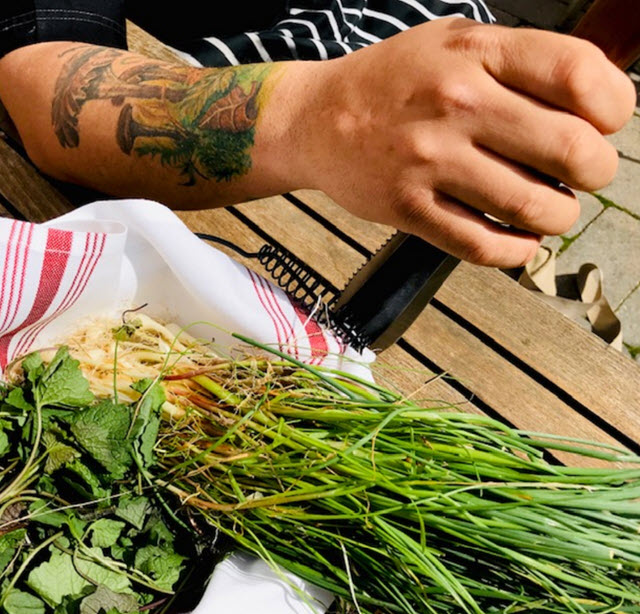 Till’s favorite hori hori knife for wildcrafting Foraging is a huge part of what I do. I go into the woods and get it for free. This summer I established relationships with local farmers and developed a good connection with them. Since I am new to the area, I had to find spots to go foraging. ES has a rooftop garden, but it only has six inches of soil. We have to get the soil up there using ropes and a bucket. It’s very intense. This winter I set up some grow lights in the basement and started growing microgreens when a supplier wanted to charge me $100 a flat!
I’m using heirloom seeds from Monticello [Thomas Jefferson’s Monticello in Charlottesville is a World Heritage Site] where they have a program called the Thomas Jefferson Center for Historic Plants. They will be using 800 acres of their property just for heirloom crops.
What ingredients have you foraged recently?
I found spring garlic while foraging last week and caught lake trout while ice fishing in Canada.
Are you cautious not to overharvest?
I only harvest one third of what I find. I learned my lesson years ago when I picked all the chanterelles from one patch and it took five years for them to come back!
What’s the most popular dish you can’t take off the menu?
Acorn pasta made with flour from acorns I foraged, has been really popular. Unfortunately, I’m out of the acorns for now. Also, guests seem to not get enough of chicory – brined and seared with black pepper and served with a side of kombucha squash and sage. The pork chop schnitzel and gumbo are favorites now too, and the sea bass served with clams and broccolini.
 Sea bass with clams and broccolini at Evening Star I had the sea bass the other night and it was perfectly prepared with a crisped skin and tender flesh.
It’s important to understand what goes into raising or catching food. I have raised animals and farmed before and it bothers me when people don’t respect the protein.
What do you see as the future of Evening Star?
I’m still getting used to the flow. Seeing how the summer is going to be when we open the patio. The balance is going to be interesting. I plan to be at the farm and continue foraging this summer. Next year I’ll know exactly what to expect.
This interview was lightly edited for clarity.
Jordan Wright
October 2018
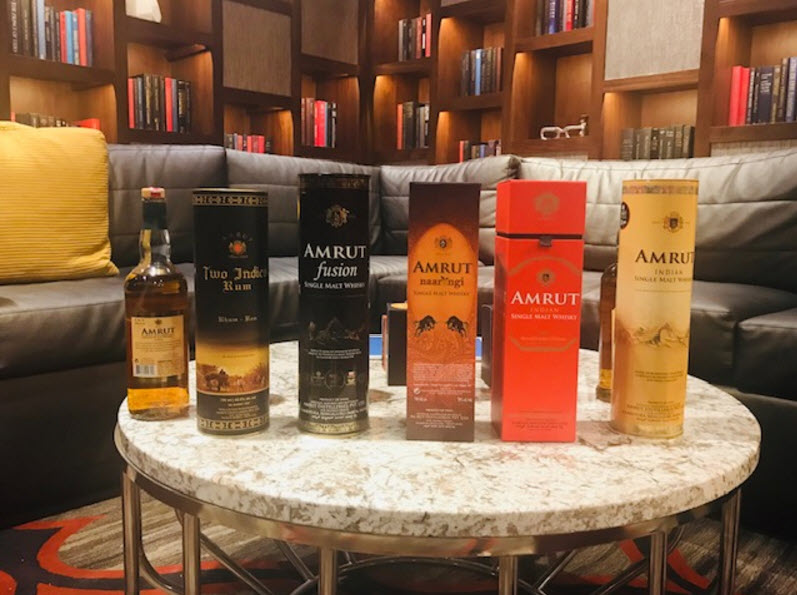 Photo credit: Jordan Wright Single malt whisky connoisseurs can rejoice at the news that some of the finest whiskies in the known world have reached our shores from Amrut Distilleries in India. Amrut “Fusion” has been rated “third best” whisky in the world by British whisky writer, Jim Murray, with 97 points from the Whisky Bible who at that time ranked it third in the world. They could also boast of the “Thumbs Up” award from Malt Maniacs and dozens more awards worldwide. A recipient of 92 points out of 4,800 entries by Whisky Advocate, they have consistently beat out the best-known Scottish whiskies in countless blind tastings. Its “Single Malt Peated Cask” has scored a coveted 92 points from the Whisky Bible. In 1987, and despite outsider prejudice, Amrut bravely put its product into these highly competitive Scottish tastings to prove it can compete with the best in its field. They are now the number one whisky in India, despite the country’s longtime preference for Johnny Walker Black, a holdover since the early days of British colonialism.
Last month I had the opportunity to taste all of Amrut’s products from their single malt through their entire gamut of whiskies and rums. I didn’t do a blind tasting, because frankly I would have planted my face in the floor, especially as it was a noon tasting and I hadn’t had breakfast. Managing to keep upright throughout, I settled in for a concentrated, thought-provoking experience that would both confound and alter my appreciation of whiskies outside the realm of the best-known brands.
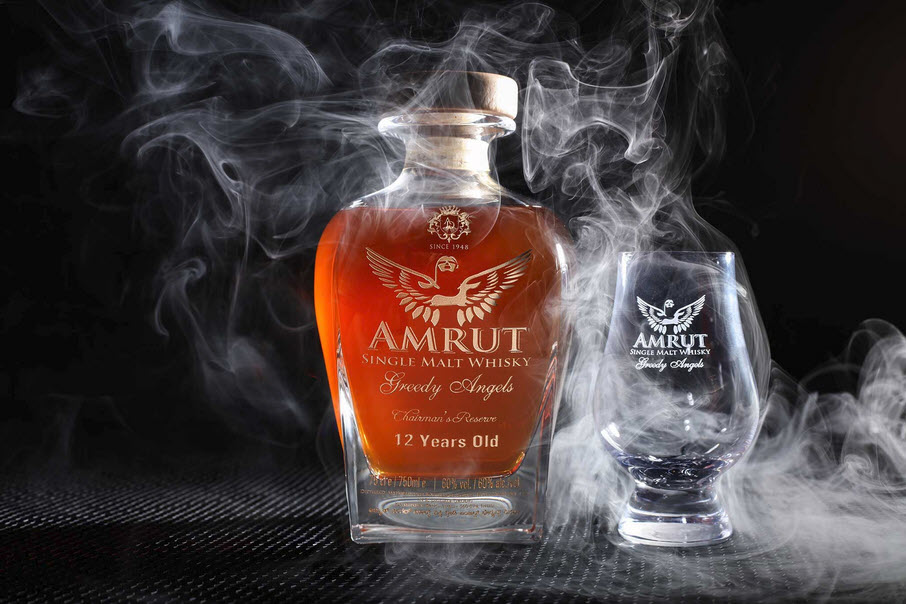 Photo credit ~ Amrut Made from select Indian malted barley grown in Punjab and Rajasthan, these spirits are distilled in the hot climes of India. They react to those conditions by coming to fruition far earlier than others of their ilk. Their flavors are modified by temperature, added ingredients (spices, citrus peel and the like), the wood used in the casks, Himalayan water from the Sutlej river, and the casks’ former use. These choices are made under the direction of Master Distiller Surrimar Kumar, a 33-year veteran of Amrut and award-winning whisky innovator, and veritable genius in drawing out the complexly crafted, unique personalities he is after. One of Kumar’s creations is Amrut “naraangi” that won “World’s Best Whisky 2018”. Aged three years in an ex-oloroso sherry cask, the single malt is then seasoned with wine and orange peel and aged for another three years.
Did you know that 60-70% of flavoring comes from the barrel? That’s how important the choice of wood is for determining the final profile. So, imagine for a moment using wood from five different species of trees to produce one whisky barrel. These specially designed barrels are used exclusively for their “Spectrum Single Malt Whisky” to be available in 2020. I’ve tasted whisky made in port barrels and sherry barrels (Amrut “Single Malt Whisky Intermediate Sherry” earned 96 points from the Whisky Bible), but this is an exciting new concept. A Special Limited Edition, Amrut “Madeira” aged in Madeira barrels, will be on the U. S. market in time for the holidays.
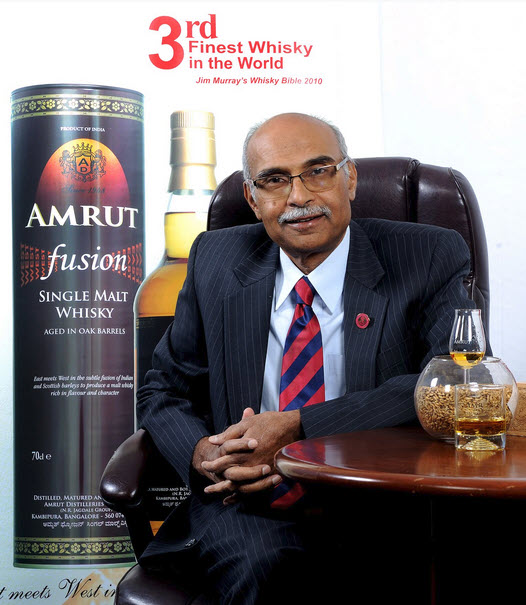 Neel Jagdale – Chairman of Amrut ~ Photo credit: Amrut Next year, Ashok Chokalingam, who has been with the company for many years, will take the reins as Master Distiller and Whisky Innovator bringing his own imagination to the company’s growing range of whiskies and rums. At our first meeting he offered up this self-effacing quote. “We are a minnow coming from India,” he told me. Well, this minnow of a company has become a full-grown shark with a high demand for its products that’s currently five times what they can supply. But, no worries. The company’s newest plant will now be able to accommodate its rising popularity. Amrut is now in 45 countries and boasts $3M in annual sales. Surprisingly, the U. S. is the second largest market outside of Europe for “Amrut Single Malt Indian Whisky”.
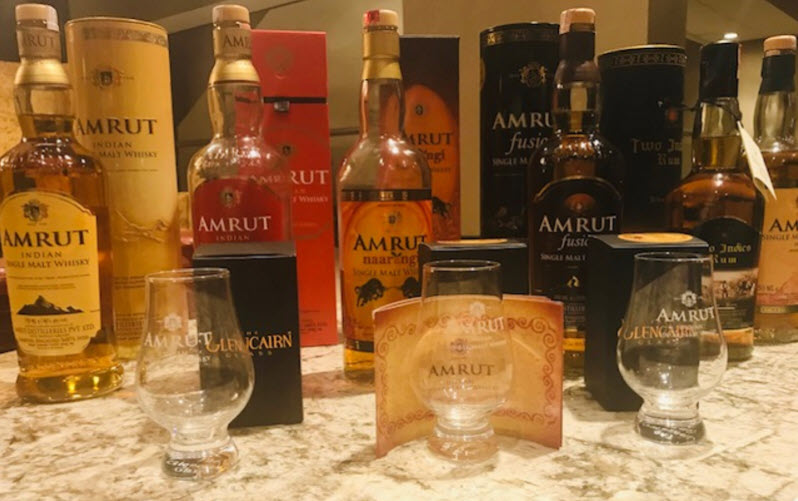 AMRUT – Photo credit: Jordan Wright Now I’m no expert in describing the varied flavor profiles of whisky, I rely on my palate and my years of experience tasting spirits from around the world. I leave it to the whisky mavens to create descriptors for these products. They’re the ones that can extrapolate the taste of honey, chocolate, ginger, licorice, chocolate-chip cookie dough, driftwood (?!!!), orange, smoked fish, pepper, barbecued meats, pears, coconut, cherries, plums, raisins, lemons, and on and on. It’s a probably good thing they don’t describe food.
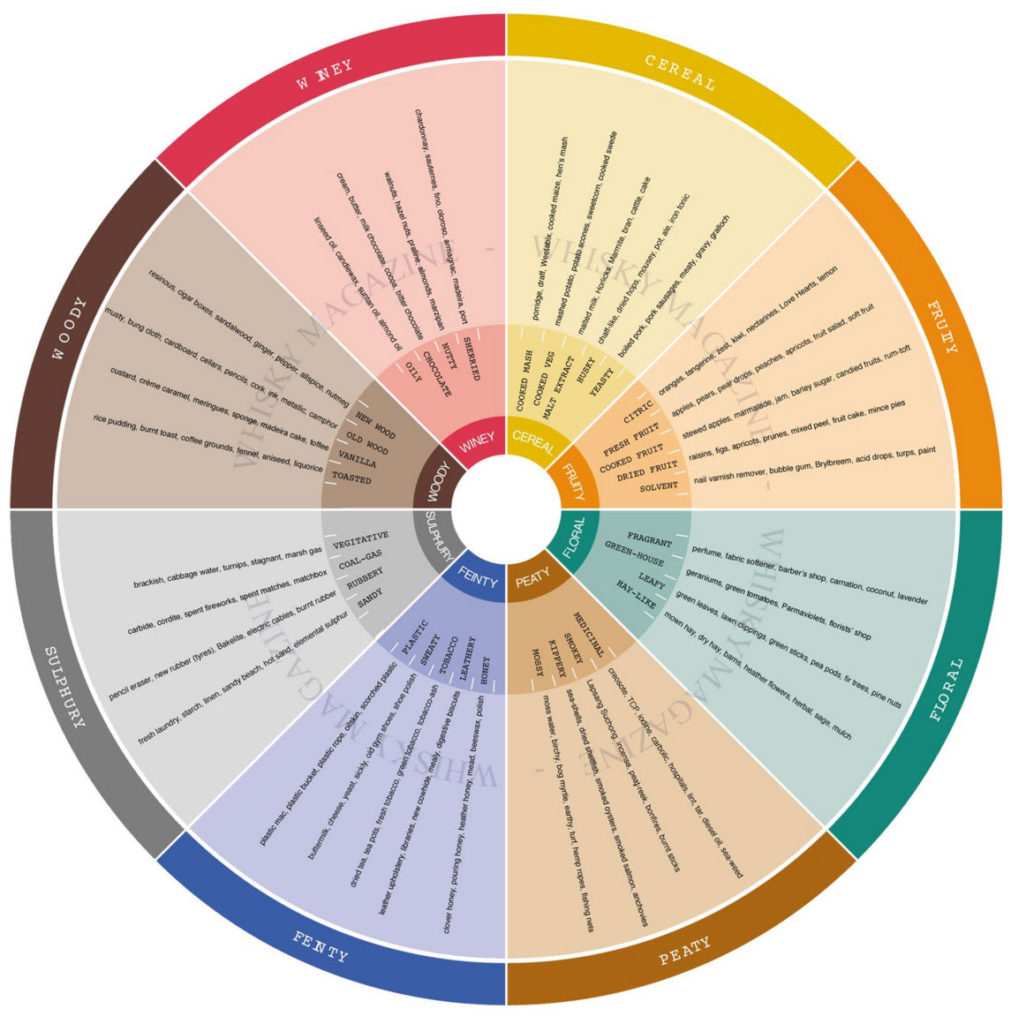
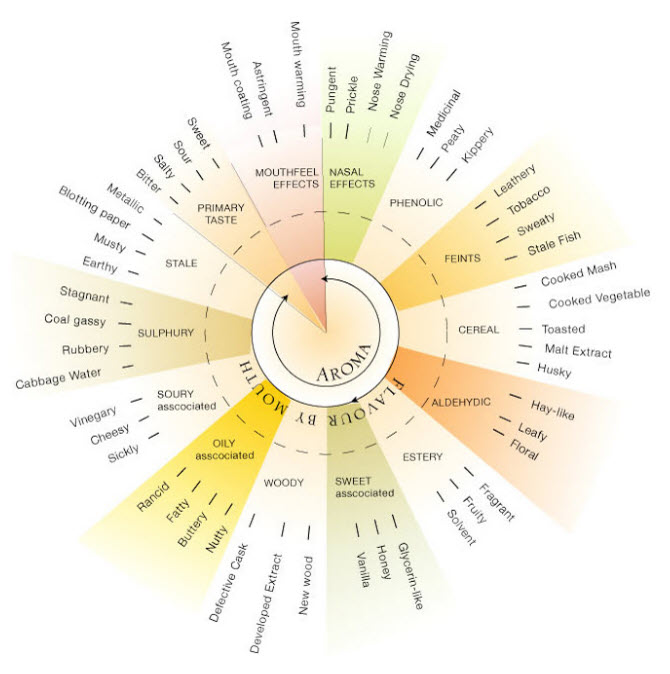 [Color Wheel Credit] ~ Courtesy of Whisky magazine Because India is the world’s second largest producer of sugar in the world, Amrut made the decision to produce rum, and it is sensational. Ashok explained that rum existed since 320 BC – long before rum was produced in the Caribbean in the 17 th century. Amrut offers two types of rum – “ Two Indies Rum”, made with leftover sugar cane from Jamaica, Trinidad and Guyana. It is made with five rums that have been aged together. The “ Old Port Deluxe Matured” has a lovely hint of coconut from the jaggery sugar used in the process. Jaggery is a by-product of sugar cane grown in India.
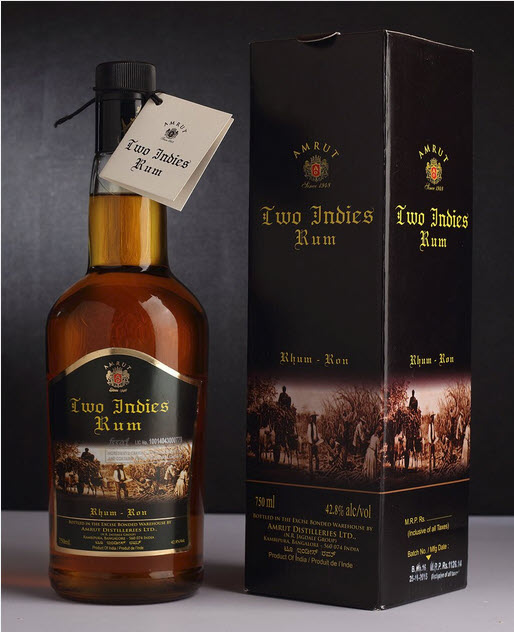 Two Indics Rum ~ Photo credit: Amrut If you’re looking to impress a whisky connoisseur with the whiskies that everyone is talking about, you can do no better than some of these winning spirits.
Imported by Glass Revolution Imports you can find many of these whiskies and rums in our area at Jack Rose Dining Saloon, Pappe, Bombay Club, Rasika, Karma, Chaplin’s and Chloe by Haidar Karoum.
For more information visit Amrut Distilleries and Amrut Whisky UK Office.
Jordan Wright
July 16, 2018
for the Alexandria Times

When Forensic Sketch Artist Kelli Schollard-Sincock, who holds a BA in Interdisciplinary Art from the University of Washington and completed the BFA program in Printmaking from George Mason, was thinking about how she could make an impact in her community, she recalled a casual comment a friend made during a lecture at Lorton the two women attended. The talk featured prisoners’ art the guards had collected either through barter or outright payment and she was duly impressed by the caliber of the work. Her friend said, “You should do that,” meaning teach art within the prisons. The offhand remark didn’t really register with her until she read a report that the new administration planned to cut funding for the arts. She felt it was a call to action.
Taking the bull by the horns, she approached Lt. Marybeth Plaskus at the Alexandria Detention Center and asked if they had a need for a prison arts program. Plaskus gave her the nod, and the first class was held in February 2017. “We started from scratch with one classroom that was immediately filled with about 25 male students. That was such positive reinforcement for me. They were always thankful I was there,” she says. Since its inception the program has not only been hugely popular, but it has grown rapidly and now includes classes for women at the Fairfax facility.
Piggybacking on her success at the Alexandria prison, she then reached out to the Fairfax County Detention Center and began her arts program there in August 2017. She now teaches there twice a week plus one day a week in Alexandria. Yet there is still more demand. Schollard-Sincock’s goal is to hire more teachers to fill the many requests for additional classes.
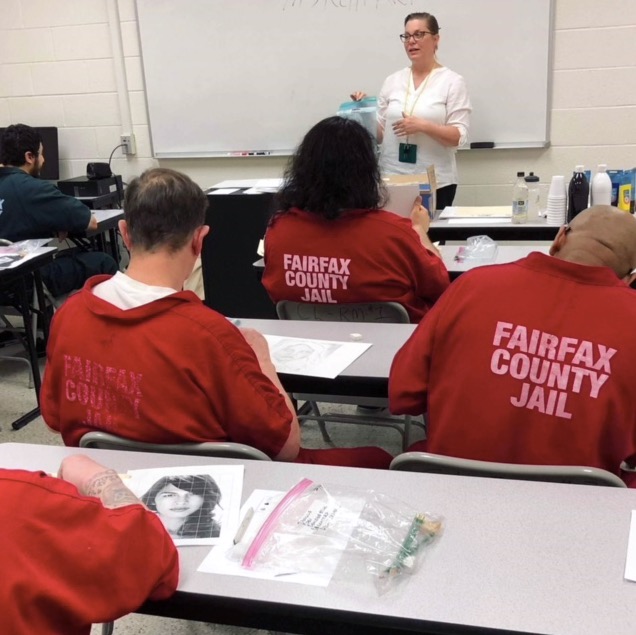 Kelli Schollard-Sincock teaching at the Fairfax County Detention Center Initially the challenge was to find art supplies which are not funded by state or local counties. She had to get creative. Well, that’s what artists do. Right? In a stroke of good fortune, she discovered the ‘Buy Nothing Project’, an online sharing organization for free items that operates locally through Facebook. There she put out a call for art supplies and had such a positive response that for four weeks she drove all over the county gathering an immense amount of materials.
 Photo from Alexandria County Detention Center Prison Art Program courtesy of Kelli Schollard-Sincock Del Ray Artisans heard about her classes and thought they could help. The gallery’s Fundraising Director Joe T. Franklin, Jr. and Acting President Drew Cariaso wanted to learn about the program and have her give a talk to their members. Member artists were so impressed with her outreach program that they held a fundraiser including an in-house drive for materials. “People have really taken ownership of the program,” she adds. Subsequently the gallery has been instrumental in helping her set up a non-profit to be called ‘Inspiration Matterz’ which will allow her to expand the program with the help of additional art teachers. She credits Program Directors Lenora Murphy and Latanya Ervin at the William G. Truesdale Adult Detention Center with keeping her program ongoing and her husband Austin and son Gregory for their support and encouragement.
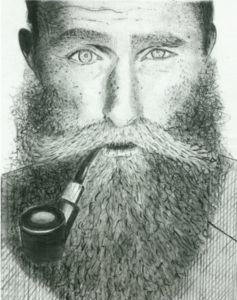 Photo from Fairfax County Detention Center Prison Art Program courtesy of Kelli Schollard-Sincock Schollard-Sincock chooses the subjects that are executed in a variety of mediums. “Men and women respond totally differently to the programs. My intention is to teach tangible skills not just doing crafts. My very first student was an older gentleman. He told me, “I don’t know what I’m doing here. The best you’re going to get out of me are stick figures.” She says he really clicked when he started painting and is now painting photorealistic drawings. “He is like the case study of why I’m doing what I’m doing.”
Over the past year she has seen a huge change in their attitude. “It’s empowering to learn that you have developed a skill. The biggest thing in these classes is getting them to trust me and not give up.”
Director of the Target Gallery at the Torpedo Factory Art Center, Leslie Mounaime, reached out to her and offered their site for a show. On Friday, July 20th, Del Ray Artisans will host the opening night reception for “Off The Grid” in the Torpedo Factory’s Site 2 Community Gallery showcasing 49 framed drawings from Schollard-Sincock’s prison art program. The opening reception is from 7-9pm. The show runs through August 31st.
Kelli Schollard-Sincock’s own work can be found on her website www.KelliSincock.com.
Jordan Wright
December 16, 2017
Special to The Alexandria Times
 Melanie Bikowski Alexandria artist Melanie Bikowski is a mom first – at least that’s how she’d prefer you to think of her. Mother to two-year old Cayce, she is relatively new to the art world, yet in a few short years she has developed quite a following for her colorful acrylics. Originally from Hampton Roads in Southeastern Virginia, Bikowski grew up in Norfolk, moving to Alexandria five years ago. After getting dual bachelors’ degrees in Psychology and Creative Writing, she continues to seek her major in psychology at Old Dominion University. Her thesis is on ‘Mom’s Art’, a term that’s been used to describe the work of Canadian artist Ruth Oosterman, who also found inspiration collaborating with her toddler. Bikowski explains, “A lot of my work is bright, amorphous, abstract modern art and I wanted to incorporate my mom life into my work.” In the spirit of honoring a child’s drawings that most parents merely tack onto the refrigerator, Bikowski says, “I feel like that’s the reality of our home décor. Other people live in your home and they leave their work there too.”
 Abstract works with daughter Cayce While pregnant with Cayce, Bikowski had begun to have dreams of painting canvasses with her daughter. “We’ve been doing pure creation together while building our relationship. She has now become my muse.” Defining her paintings as spur-of-the-moment, intuitive, emotional art, she believes if an artist “flows the best of their emotions are at their highest.” She feels her daughter’s limitless sense of wonderment, childlike experimentation and freedom of expression inspire her, leading her to incorporate Cayce’s coloring pieces, drawings and stickers into her paintings. The toddler’s current fantasy playworld is heavily influenced by the Powerpuff Girls and My Little Pony.
“When I moved here my biggest dream was to be an artist. People were telling me that doesn’t exist,” Bikowski says. One day, while at her first job in Alexandria at the Robinson Terminal, fate drew her to the nearby Torpedo Factory where she found a gallery filled with dozens of artists. “I was stoked to see what was going on there and went every weekday after that. Watching the artists and hearing how excited they were – that just really saved me,” she says.
 “Home” Melanie Bikowski 2016 In January of 2014 her mother convinced her to take a course in abstract art at Alexandria’s famed The Art League with instructor, Beverly Ryan. Through Ryan, whom she considers her mentor, she took on an art challenge to complete one painting a day for a year. That massive effort turned into 466 paintings, of which she sold over 100. Over 80 of her paintings have Cayce’s work in them. During the same period, she discovered the Del Ray Artisans Gallery on Mount Vernon Avenue. Now celebrating its 25th year promoting art and artists in Alexandria, the gallery hosts monthly members’ shows open to the public. There she found a welcoming art scene with members helping each other find alternative submission opportunities.
That led her to collaborate on a show earlier this year with local artist, Lotus Heartsong, at the The Village Gallery in Old Town Fairfax. Featured in the Washington Post’s Going Out Guide, the women were thrilled to welcome over 300 people to their opening. As a result of the show’s huge success, she received a residency at Olly Olly, an alternative art space and gallery in Fairfax where she shares working space with four other artists and is able to show at their exhibitions.
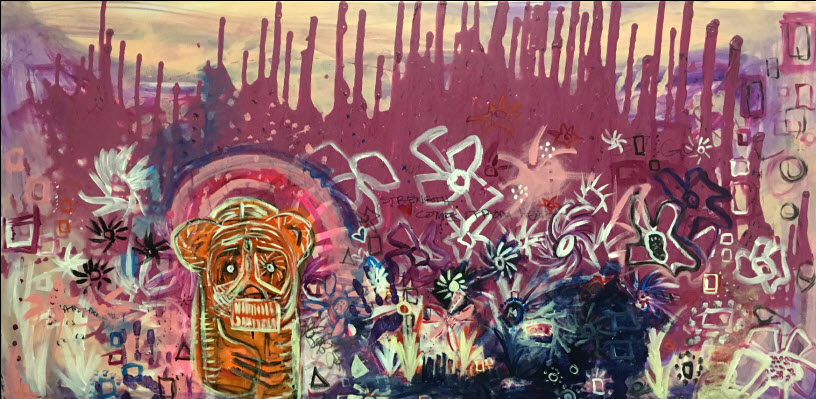 “A Call for Courage” Melanie Bikowski 2017 This January Bikowski will co-curate Sensorium with fellow DRA member Betsy Mead. The exhibit is described as the using the part of the brain that, “evokes emotional feelings of sympathy, appreciation or gratitude, or something that is moving, heartbreaking or tender”, and honors “how artists interpret the impact of our human journey through evoking the five senses.” The show’s cover art is Bikowski’s evocative painting, “Home”.
Sensorium runs from January 5th – 28th 2018 at the Colasanto Center, 2704 Mount Vernon Avenue, Alexandria, VA 22301. Gallery hours are Thursdays 12-6pm, Fridays 12-9pm, Saturdays 12-9pm, and Sundays 12-6pm. The gallery is free and handicap accessible. For more information on the show visit The Del Ray Artisans Gallery. To learn more about Melanie Bikowski visit her website.
Jordan Wright
Special to The Alexandria Times
June 6, 2017
 Nature-inspired mosaic by Nina Tisara – Photo credit Jordan Wright When interviewed for her 2015 Living Legends of Alexandria profile, Artist-Photographer Nina Tisara quipped, “I had a life before Living Legends and I expect to have a life after.” As founder of the organization that selects and celebrates annually the inspiring accomplishments and contributions of our finest citizens, Tisara will retire from her ten-year commitment leading the organization to pursue her art.
Her photography journey began in the 70’s at Air Force official photo library job when she took first photography class writing picture captions. While attending NOVA night classes in photography to reward herself for earning George Mason BA degree in economics in the mid-80’s and working full-time for a national association, she got hooked, and started part-time freelance photojournalist journey. More study followed and her work began to get noticed. Eventually the single mother of four went pro with portrait and wedding commissions, moving her business from Fairlington in 1990 to the townhouse on King Street where Tisara Photography continues to thrive under her son, Steven Halperson.
Currently Tisara has two very different shows in our area. Both are worthy of study. Her powerful black and white photographs of worshippers of all faiths allow us a window to the faithful in intimate and revealing moments of worship. In her nature-related mosaics show she interprets her own photographs in a more classic form – revealing the intricate details of nature through tiny pieces of tile.
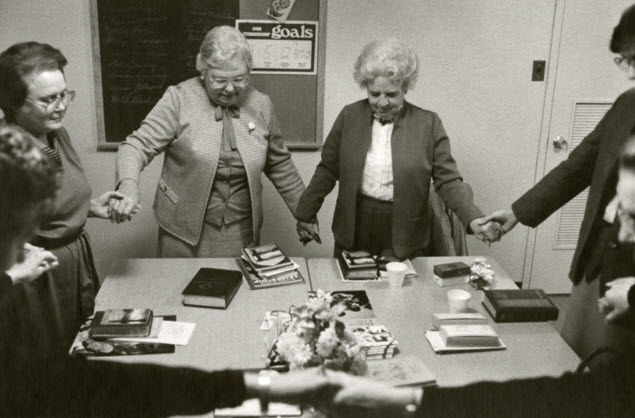 Gospel Song, Mt. Jezreel Baptist Church – Photo credit – Nina Tisara The show at Convergence, Witnessing Worship – Connecting Through the Lens of Faith, brings together for the first time two of Tisara’s photo documentary studies of worship in Alexandria – Converging Paths (1984-85) and United in the Spirit (1995). The exhibition invites Alexandrians to share photographs of current worship online.
Convergence believes Tisara’s work fits their universal philosophy. “The ambitious spiritual/cultural objective of this undertaking was the creation of a space where viewers were comfortable in considering the idea that agreement is not a requirement for relationship but an invitation to each of us to expand our capacity for generous listening and observation,” said Reverend Lisa Smith of Covergence.
The closing reception for Witnessing Worship is Friday, June 16, 7-9pm at Convergence, 1801 N. Quaker Lane. For details about the online project contact [email protected]. The reception is free and open to the public.
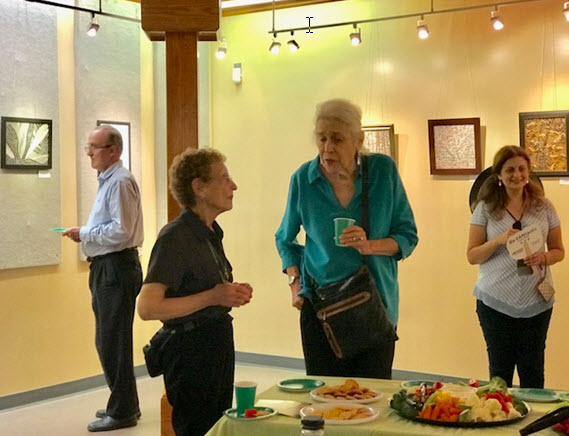 Nina Tisara talks with fellow artist Marian Van Landingham at the opening reception at Huntley Meadows Visitors Center – Photo credit Jordan Wright In 2005 when photography went predominantly digital, Tisara laid her camera aside and started creating mosaic designs studying under Gene Sterud, a retired archeologist. “The medium provides the opportunity to combine my early training in painting and sculpture and my later work in photography. I often use the double-reverse process taught by Gene which, like sculpting in clay, allows the image the freedom to evolve,” she explains. Each piece is signed with a tiny silver gecko. “Geckos represent transition and transformation, death and rebirth, and letting go of old things for new,” she adds.
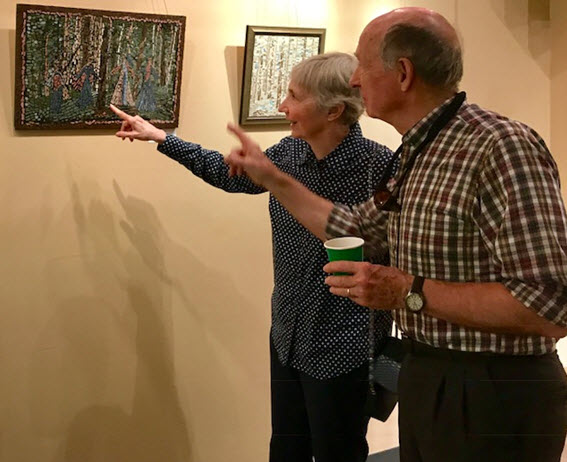 Alexandria residents Judy and Carl Lohmann admire details of Tisara’s mosaics – Photo credit Jordan Wright Currently on exhibit at Huntley Meadow Park Visitors Center through August 31st, we see her work inspired by her photographs of a particular stand of trees at the park where she had envisioned “dancers” in the twisted grapevines that gird these trees. Some of the mosaics are hung alongside the photographs that inspired them. Tisara has been visiting the park and observing and photographing nature there since 2000 and first exhibit in 2003.
Huntley Meadows is located at 3701 Lockheed Boulevard, in nearby Fairfax County. For Visitor Center hours, see http://www.fairfaxcounty.gov/parks/huntley-meadows-park/
|

























